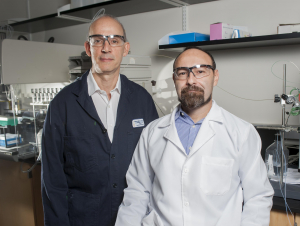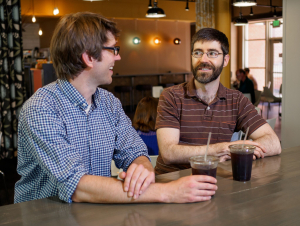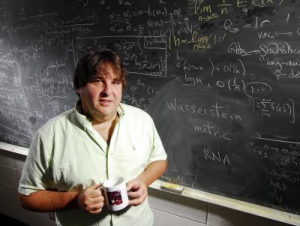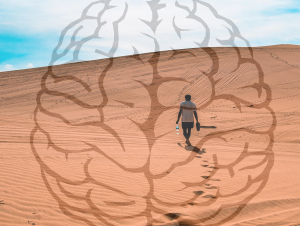To request a media interview, please reach out to experts using the faculty directories for each of our six schools, or contact Jess Hunt-Ralston, College of Sciences communications director. A list of faculty experts is also available to journalists upon request.
Latest News
The parasite that causes leishmaniasis, a scary flesh-rotting disease, is tough to beat, says School of Chemistry and Biochemistry Professor and Chair M.G. Finn. It usually ravages equatorial countries but is now in North America. Finn is teaming with Brazilian scientists to work on a potential vaccine. And congratulations to Pedro Marquez Zacarias for nailing the episode 2 quiz.
When Will Ratcliff and Peter Yunker first met for coffee they had no idea they would eventually collaborate on research that would be published in Nature Communications and Nature Physics.
Using a mathematical model, Georgia Tech biomathematician Howard “Howie” Weiss and Stockholm University microbiologist Klas Udekwu open a potential path to slowing microbial resistance to current antibiotics.
Using a mathematical model, Georgia Tech biomathematician Howard “Howie” Weiss and Stockholm University microbiologist Klas Udekwu open a potential path to slowing microbial resistance to current antibiotics.
Jenny McGuire, an assistant professor in the School of Earth and Atmospheric Sciences and the School of Biological Sciences, has a tough commute to her summer research site: an 80-foot drop into a deep, dark Wyoming cave. McGuire studies fossils to better understand climate change’s impact on animal and human populations.
Sweating up a storm doing yard work? This is what your brain might be doing: Reasonably customary dehydration led to shape changes in the brains of test subjects in a new study. And neuronal firing patterns got nosier. The subjects' average performance of a motor task also slipped markedly.
Laughing gas and the mystery of Carl Sagan's Faint Young Sun Paradox: When the sun shone dimmer an eon ago, and was stingy with heat, Earth remained warm in spite of it likely thanks to a mix of greenhouse gases. Biogeochemists have now shown how nitrous oxide, known today for its use as a dental anesthetic, may have made it into the mix.








